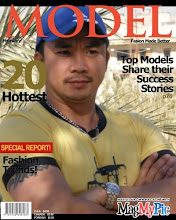
by Jeremy Kressmann
Seoul is not in Southeast Asia. But for a budget traveler like myself headed on to Southeast Asia, this South Korean capital has provided a perfect introduction to my trip. First-time Asian visitors "headed Southeast" often start in Tokyo, the neon Asian mega-capital of food, shopping and nightlife. Yet Seoul matches the urban amenities of Japan's uber-city pound-for-pound, all at a fraction of the price. When you add in Seoul's welcoming and friendly locals, surprising natural beauty and top-notch culinary scene, you've got the makings of a emerging traveler's hotspot.
So if you're planning a visit to Southeast Asia, skip that Tokyo layover and arrange a stopover in Seoul. Not only does South Korean carrier Korean Air offer convenient Asia connections from Chicago, New York, Dallas, Washington DC and Atlanta, it's also a great place to get over your jetlag and pickup last-minute travel supplies before heading onwards. Whether you're just passing through or end up hanging out stay a few days, you'll find yourself surprised and delighted with just how much Seoul has to offer.
Over the past few days here in Seoul, I've found plenty of reasons to justify sticking around. Ready to investigate this tourist-friendly, bustling Korean capital? Let's take a closer look at Seoul and review the basics of your visit? Click below for more.
Getting Around
Most travelers arrive in Seoul through Incheon International Airport, located an hour west of the city. Getting downtown is easy enough. Budget-minded travelers should grab an "Aiport Limousine" bus ($10) or the Airport Railroad Express (also about $10), both of which connect to Seoul's excellent metro system. In a little over an hour you'll arive in Seoul.
To get around, you're going to want to use Seoul's fantastic metro system. As one of the largest in the world it will take you just about anywhere in the city and prices are reasonable, costing around $1-2 per ride. Signage is in both Korean and English to aid with navigation.
City Layout
Seoul itself is divided into two distinct sections, located north and south of the Han River. On the north is Seoul's historic Jongno-gu neighborhood, home to many royal palaces, along with nearby Insadong, ground zero for the Seoul art galleries and antiques. To the west of Jongno-Gu is Hongdae, Seoul's happening student district, bursting with cafes, bars and eateries. Nearby Itaewon is known as the home of Seoul's expats, including large numbers of U.S. Military personnel and loads of restaurants and bars. On the south side of the Han River is ritzy Gangnam-gu, a more upscale area full of high-end hotels and plenty of shopping.
Where to Sleep
Seoul has numerous lodging options, ranging from the luxurious to the thrifty. If you're looking to make your dollar stretch the furthest, check out some of Seoul's many clean, modern guesthouses. In addition to NAMU Guesthouse is well-located near Seoul's trendy Hongdae student area. Other good options include anHouse and Bebop Guesthouse, both located not far from Hongdae in Mapo-Gu. Expect to pay between $10-$30/night for a guesthouse and much more than that for a nice high-end hotel.
What to Do
Seoul has a surprising amount to offer for budget travelers. With exchange rate currently trading at 1150 Won to the Dollar, you'll find attractions, food, drinks and souvenirs are amazingly cheap compared to wallet-hungry Asian cities like Tokyo. Some top attractions include:
* Gyeongbokgung - one of Seoul's biggest royal palaces, Gyeongbokgung was first contstructed in 1394. Though the original was heavily damaged during the Japanese occupation of Korea from 1910 to 1945, it's been immaculately restored. For about $3, visitors can spend their time strolling the beautiful grounds and investigating the palace's lavish living quarters. The National Folk Museum of Korea is also nearby.
* Bukhansan National Park - the greater Seoul metropolitan area boasts surprising natural beauty. About an hour north on the metro is Bukhansan National Park, a popular hiking spot and home to a number of serene Buddhist temples. During autumn Korean hikers flock to Bukhansan to experience beautiful fall colors, have a picnic and toast their ascent of the park's three peaks with Soju, a Korean rice liquor. Entrance is free.
* Seoul Markets - though frequently overshadowed by Japanese and Chinese cuisine, the spicy flavors of Korean food will have any traveler's mouth watering. Perhaps the best way to experience Seoul's food scene is through its many food markets. Spots like the Noryangin Fish Market, Gwangjang Market and Gyeongdong Herbal Market offer a good sampling of all that Korean cuisine has to offer.
* Korean DMZ - many visitors to Seoul take a daytrip to the demilitarized zone, or DMZ, the buffer zone that runs between North and South Korea. Visitors can stop at the Joint Security Area at Panmunjeom, where North Korean border guards stand sentry, as well as several incursion tunnels where North Korean forces tried to sneak into South Korea. Cost varies from $50-$100 depending on what sights are included.
Gadling writer Jeremy Kressmann is spending the next few months in Southeast Asia. You can read other posts on his adventures "South by Southeast" HERE.

No comments:
Post a Comment